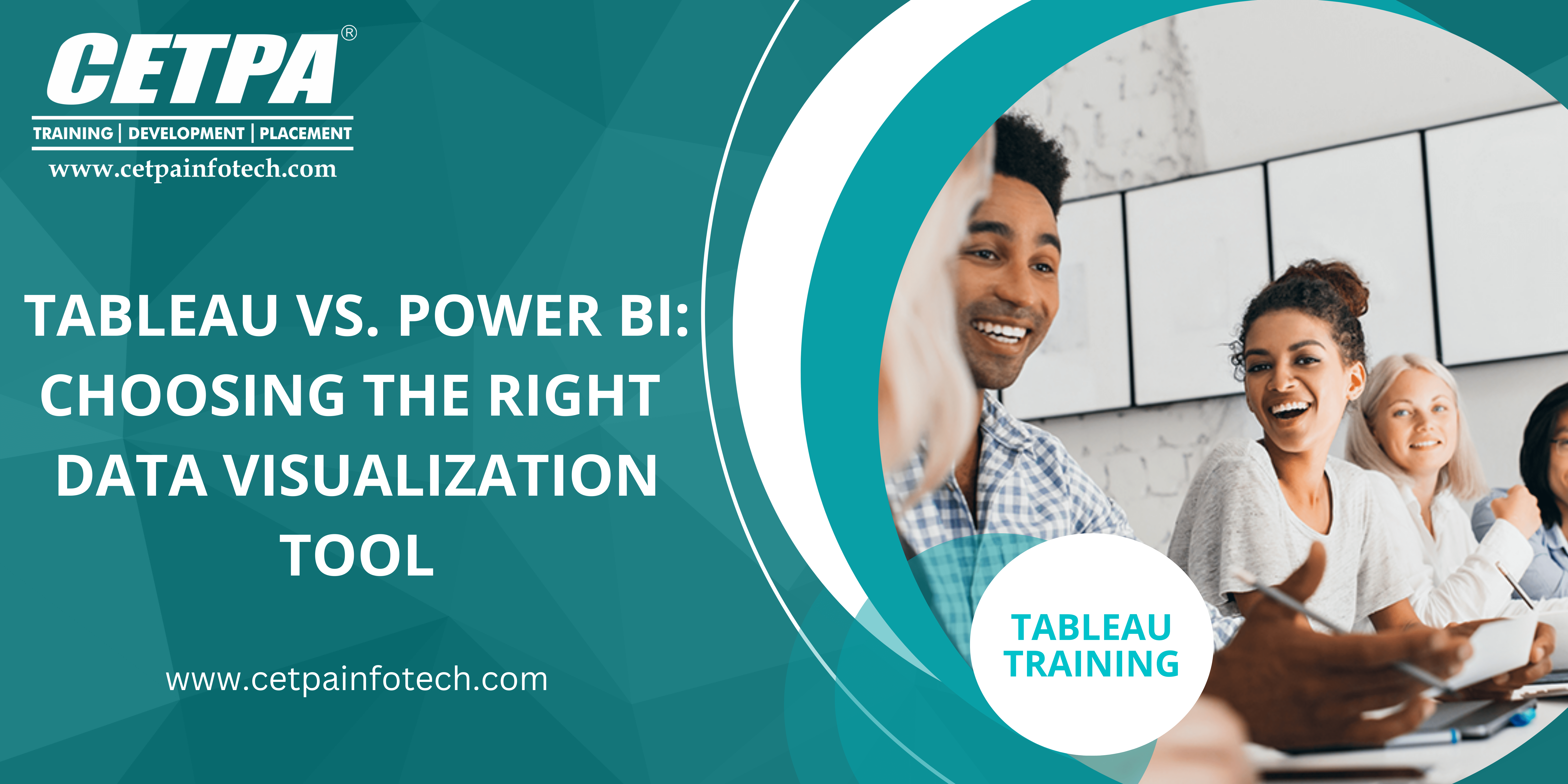Tableau vs. Power BI: Choosing the Right Data Visualization Tool

Unveiling the Data Duel: Tableau Training vs. Power BI Training
In the current data-centric business landscape, the ability to extract actionable insights from large data sets is similar to a superpower. This is where the evolving duo of Tableau training and Power BI training, arise as the wrapped defenders for organizations. This duo encourages decision-makers to use data as a powerful tool even though the choice between the two is challenging. Thus, both Tableau and Power BI have their unique strengths, providing businesses with the capability of visualizing and analyzing data efficiently.
On one hand, Tableau’s user-friendly interface, suggestive of a competent artist’s canvas, invites users to effortlessly create visual storytelling. It converts raw information into attractive, interactive dashboards, encouraging data exploration to be an artistic skill. On other hand, Power BI’s Microsoft connection offers a familiar domain for those who are well-versed with the Office suite. So, the accessibility and adaptability of Power BI Training Certification encourage users to utilize data without witnessing a steep learning curve.
Therefore, due to all this, choosing between Tableau and Power BI is a huge dilemma. Tableau allows you to be creative so that you can transform raw data into appealing images and dashboards. At the same time, Power BI permits you to leverage tools with which you’re familiar i.e., Microsoft Office. Therefore, both Tableau and Power BI are significant tools in the evolving data environment.
So, what are you waiting for? Join us on this journey as we compare Tableau vs. Power BI in depth to help you make an informed decision.
Tableau Training Vs. Power BI Training: Mastering The Right Data Visualization Tool
When choosing between Tableau and Power BI Certification Training to meet data visualization needs, several factors are considered. Therefore, to simplify this consideration, a comparison table is given below for further reference:
| Aspect | Tableau | Power BI |
| User Interface & Ease of Use | Automatic drag-and-drop interface with a beginner-friendly learning interface. | Acquainted Microsoft-style interface that is easy to use for Excel users |
| Data Connectivity & Integration | Tableau assists diverse data sources. Also, it comprises robust integration features and Data Prep for cleaning. | Power BI witnesses a seamless combination with the Microsoft environment and holds strong connections with Azure, Excel, etc. |
| Visualization Capabilities | In Tableau, there are extensive customization features that make it ideal for complex and advanced visualizations. | Power BI comprises diverse visuals, and marketplace add-ons, making it appropriate for the majority of business situations. |
| Data Modelling & Analysis | Tableau Training in Noida or elsewhere holds advanced modeling and statistical functions that make it suitable enough for complex data analyses. | On the other hand, Power BI comprises DAX for custom calculations and Excel integration. This thereby provides comprehensive data analysis abilities. |
| Pricing & Licensing | Tableau has various pricing tiers for Tableau that make it quite costly. Also, in terms of licensing, Tableau is not directly connected to Microsoft 365. | When it comes to Power BI, it is much more cost-efficient with free and reasonable pricing options. Further, it has an integration with Microsoft 365 tools. |
| Collaboration & Sharing | Tableau incorporates robust sharing via Tableau Server. This further results in effective collaboration within the Tableau environment. | At the same time, Power BI witnesses seamless integration with Microsoft Teams and SharePoint, thus facilitating teamwork and information sharing. |
Summary:
In today’s data-driven corporate environment, the ability to translate raw data into actionable insights is critical. The comparison between Tableau and Power BI Training provides us with significant insights on how to efficiently navigate this changing landscape. The ease of use of a tool is critical to its acceptance. Tableau and Power BI both have appealing user interfaces that appeal to a wide range of users. Tableau’s straightforward drag-and-drop feature enables users to unleash their creativity like an artist on a blank canvas. Whereas, Power BI’s familiarity, particularly for those entrenched in the Microsoft environment, acts as a reliable ally.
Furthermore, data connectivity and integration are vital to data visualization. Tableau’s adaptability and broad integration possibilities make it an appealing alternative for a wide range of data sources. Power BI’s seamless integration with Microsoft’s suite of tools, on the other hand, streamlines the data journey for organizations. Also, the core principle of data storytelling is visualization. Tableau’s considerable customization possibilities enable intricate and personalized visual tales, which are great for individuals looking for artistic flare. At the same time, Power BI provides a rich palette of visualizations. These visualizations are mixed with marketplace add-ons, making it a versatile tool for a variety of business settings. Thus, choosing between Tableau and Power BI courses at reputed institutes like CETPA Infotech is ultimately determined by your organization’s specific needs and preferences. The artistic canvas of Tableau is ideal for sophisticated designs, while the familiarity of Power BI merges smoothly with the Microsoft universe. This analysis simplifies decision-making, allowing firms to leverage data as the ultimate strategic tool in today’s data-centric environment. Hence, with knowledge of these potent data visualization tools, you may continue the journey and make the best decision.


